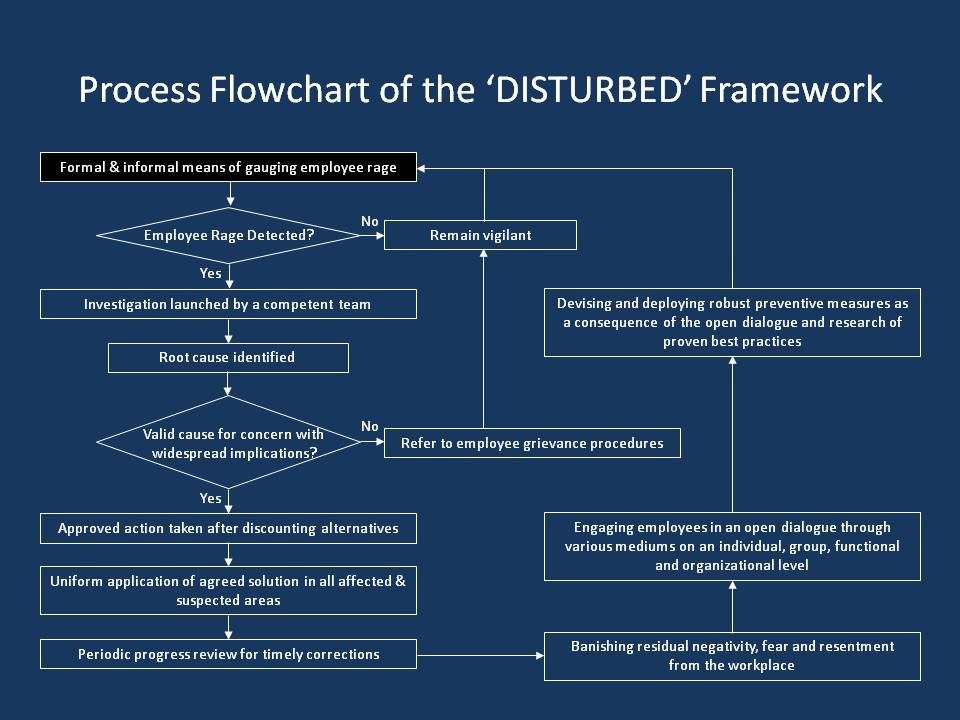Organizations are complex entities and each is governed by a unique set of dynamic circumstances that include both the controllable and uncontrollable factors.
One of the key controllable aspects is Employee Well-being, which is a significant aspect of the overall equation for corporate success. Any undesirable shift in their behaviors at the workplace can be a sign of simmering misgivings that can manifest at unpredictable times and have the potential to seriously damage the ‘Employer’ brand in addition to critically disrupting the workplace harmony. Therefore, it is imperative that organizations manage any ‘Employee Rage’ situations effectively and efficiently as an important part of operationalizing the talent management strategies. This article focuses on providing a systematic approach to mitigating ‘Employee Rage’ situations, e.g., visible anger, demonstrative frustration, verbal discontent, virulent online postings, displayed aggressiveness, vented disagreements, violent confrontations, demeaning behavior, unethical measures, destructive tendencies, etc., by deploying the ‘DISTURBED’ framework to ensure a harmonious workplace within progressive organizations. It has the following 9 elements:
1. Detection of potential/actual ‘Employee Rage’ situation (D)
2. Investigation by a competent team (I)
3. Source identification for realizing root cause (S)
4. Taking the approved action after discounting alternatives (T)
5. Uniform application of the agreed solution in all affected and suspected areas (U)
6. Reviewing progress periodically for timely corrections (R)
7. Banishing residual negativity, fear and resentment from the workplace (B)
8. Engaging employees in an open dialogue through various mediums on an individual, group, functional and organizational level (E)
9. Devising robust preventive measures as a consequence of the open dialogue and research of proven best practices (D)
The aforementioned 9 elements are divided into the following three main phases:
Realization Phase
This is focused on ensuring that any problematic areas are timely identified and examined through an insightful study to provide a thorough assessment of the nature and magnitude of the presented challenge(s)
Resolution Phase
This is focused on ensuring that the presented challenge(s) is/are comprehensively addressed and concrete corrective actions taken to resolve areas of concern in an effective manner
Reformation Phase
This is focused on ensuring that any lingering and/or wider implications of presented challenge(s) is/are proactively addressed to minimize/eliminate the occurrence of similar situations in the future
The interrelationship of the three phases and the embedded nine elements can be seen as follows:

The actual process of curtailing ‘Employee Rage’ situations can be realized through the following flowchart:

Let’s re-visit the three phases to see how the above flowchart enables the effective management of ‘Employee Rage’ situations.
Realization Phase
The organization reinforces its management system with a series of formal and informal techniques to gauge the potential of an ‘Employee Rage’ situation, e.g.,

Upon detection of an ‘Employee Rage’ situation by the HR/Talent Management function, an independent team is formed by the Head of HR/Talent Management to conduct an impartial investigation into the respective situation and find the actual root cause(s) that has/have the potential to adversely impact employee relations and the workplace environment. Once the complete picture of the situation emerges, a formal report is completed and sent to all concerned, e.g., senior management, functional head of problem area, involved parties, etc. This leads to the Resolution Phase.
Resolution Phase
For localized impact, applicable employee grievance procedures are engaged and the situation resolved amicably. In case of wider implications, a formal review is held under the leadership of senior management and all feasible options are considered by invited participants. At the end of deliberations, the most appropriate solution is authorized by the senior management to implement through robust corrective actions in all affected and suspected areas. The respective process is carefully monitored and periodically reviewed to avoid derailing and ensure timely completion of desired measures in an efficient and effective manner. This leads to the Reformation Phase.
Reformation Phase
This pertains to long-term assurance against challenges that have the potential to jeopardize the seamless functionality of a progressive organization. It is triggered once the identified ‘Employee Rage’ situation(s) has/have been effectively resolved. It involves an honest scrutiny of the organization’s core values in terms of their continued relevance and being open to change in case of any significant lagging elements. It requires an empathetic ear to employee voices and devising robust solutions that are carved out of the best available options. It demands transparency and the willingness to be held accountable for genuine concerns propounded by aggrieved employees who are the true saviors of the organization’s coveted ‘Employer’ brand. It involves a ‘deep cleanse’ of the entire organization through an honest and methodical audit that identifies lingering areas of distress and/or potential hazards for the future and astutely suturing the looming gaps with robust preventive measures.
As We Bid Farewell
The aforementioned framework has been presented as a ‘baseline’, upon which, future strategies can be efficiently and effectively established, developed, implemented, monitored, reinforced and improved to complement the various initiatives within the Talent Management domain. Let’s commit to being a corporate role model for an invigorative work environment that is a bastion of professional solace!








